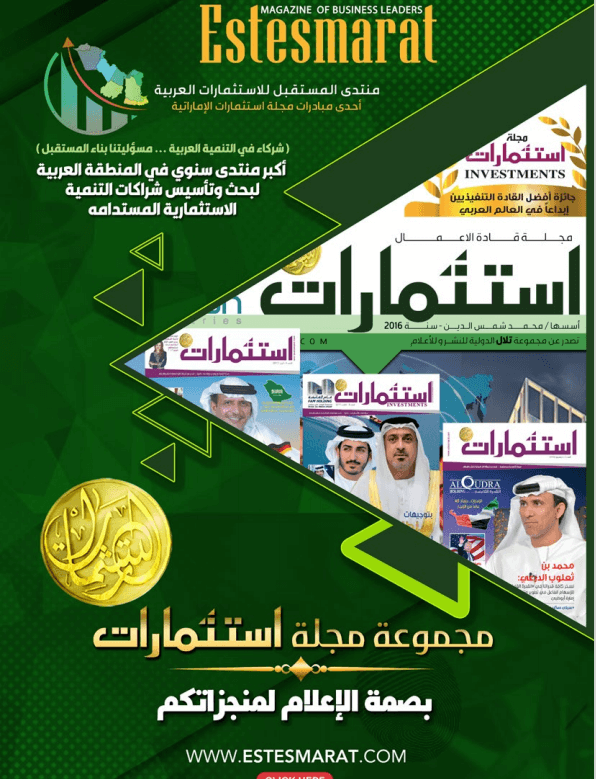• Arthur D. Little’s 2023 Global Innovation Management Excellence Benchmark Report identifies key strategies to enhance innovation performance and maximize return on investment in R&D across sectors.
Middle East, 13 June 2023: Arthur D. Little (ADL the leading management consultancy firm) launched its 2023 Global Innovation Management Excellence Benchmark Report, which highlights that of the $2 trillion per year that companies invest in R&D, financial returns from innovation have fallen across sectors since 2012. Companies report a 33 percent drop in satisfaction with their innovation performance over the same period.

ADL’s research into the practices of innovation excellence, running now for over 25 years, allows companies to anonymously rank and profile themselves on their innovation performance versus their peers. The result is new and calibrated insight into the key areas that can often dramatically increase their innovation performance. Businesses that overcome the main R&D pitfalls and develop strong innovation management practices stand to benefit, on average, from a 30 percent boost in return on R&D investment.
Ben Thuriaux-Alemán, Partner at Arthur D. Little, said: “In the GCC, there is a significant drive to diversify economies and move towards innovation-driven growth. Although Innovation Management capabilities have improved in recent years, they have not always kept up with international best practices. Better practices in applying new technologies and using technology scanning could be leveraged by GCC firms. In addition, both entities and corporates could significantly leapfrog their innovation journey by leveraging innovation ecosystem and hyper collaboration rather than having a pure focus on internal R&D and innovation.”
Key findings from the latest innovation report include:
• Traditional innovation practices are delivering diminishing results for companies, in spite of them facing a rapidly evolving world with changing market dynamics, where outstanding innovation capabilities are critical.
• Companies with strong innovation management practices are able to identify their specific limiting factors, eliminate them, and gain significant return for R&D spend.
• Increasing R&D spending is a bad idea and will reduce return on innovation – unless your innovation management practices are already in the top quartile of our cross-industry benchmark. Three-quarters of companies can get better returns by improving innovation management capabilities.
Expanding on the trends, Adnan Merhaba, Partner and Energy & Utilities Practice Lead at Arthur D. Little Middle East stated, ” There is a significant value to be unlocked by identifying, licensing or other ways of commercializing IP (patents and other forms of intellectual property) in Saudi Arabia, for instance, by streamlining regulation and other elements in the broader innovation ecosystem.”
The most frequent boosters to innovation performance include:
1. Be bold with breakthrough innovation. Companies choose to invest in incremental improvements, whereas businesses with the biggest return on innovation will take the risks to enter an entirely new market space or business model and invest proportionally more in this area. “This is an area where the UAE has arguably made significant strides by taking on more ambitious and futuristic projects than the rest of the world as it accelerates a transition away from a resource-based economy,” added Merhaba.
2. Embrace business model innovation. Working with the ecosystem, finding new market segments, combining products and services in new ways, and developing “nightmare competitor” capabilities to future-proof your business are just a few ways managing business model innovation shows its value, particularly in fast-paced technology sectors.
3. Close the innovation management gap within companies. ADL sees a very wide variation in innovation performance capabilities in business units within companies. This means best practices are not being shared within an organization. A company-wide approach, with incentives and KPIs to support it, will help create a shared innovation culture that improves return on R&D investments.
4. Agile business management methodology grew out of software development, in which the mantra “fail fast and fail cheap” was a proven driver of R&D. Although not applicable in all sectors, agile is now regularly used across industries such as consumer electronics, telecoms and media, energy, and even healthcare. The speed with which the COVID-19 vaccine was developed shows the success the Agile method can have when the risks of rapid development are outweighed by those of inaction.
5. Adopt five key skills of modern innovation leadership. As the speed of business cycles increases and technologies and industries converge, leaders today need five core skills to drive innovation in their organizations: vision belief, meta knowledge, network skills, perspective originality, and a data-driven digital-first approach.
“All companies in our benchmark have the potential to be innovation high performers,” continued Thuriaux-Aleman. “The appetite for businesses to regain ground on stagnating innovation efforts is clear across sectors, and new value can be gained, particularly from exploring the five innovation boosters laid out in this report.”
The Arthur D. Little Global Innovation Benchmark is a quarter-century perspective into how global businesses conduct R&D and the value they generate from it. The full report,




